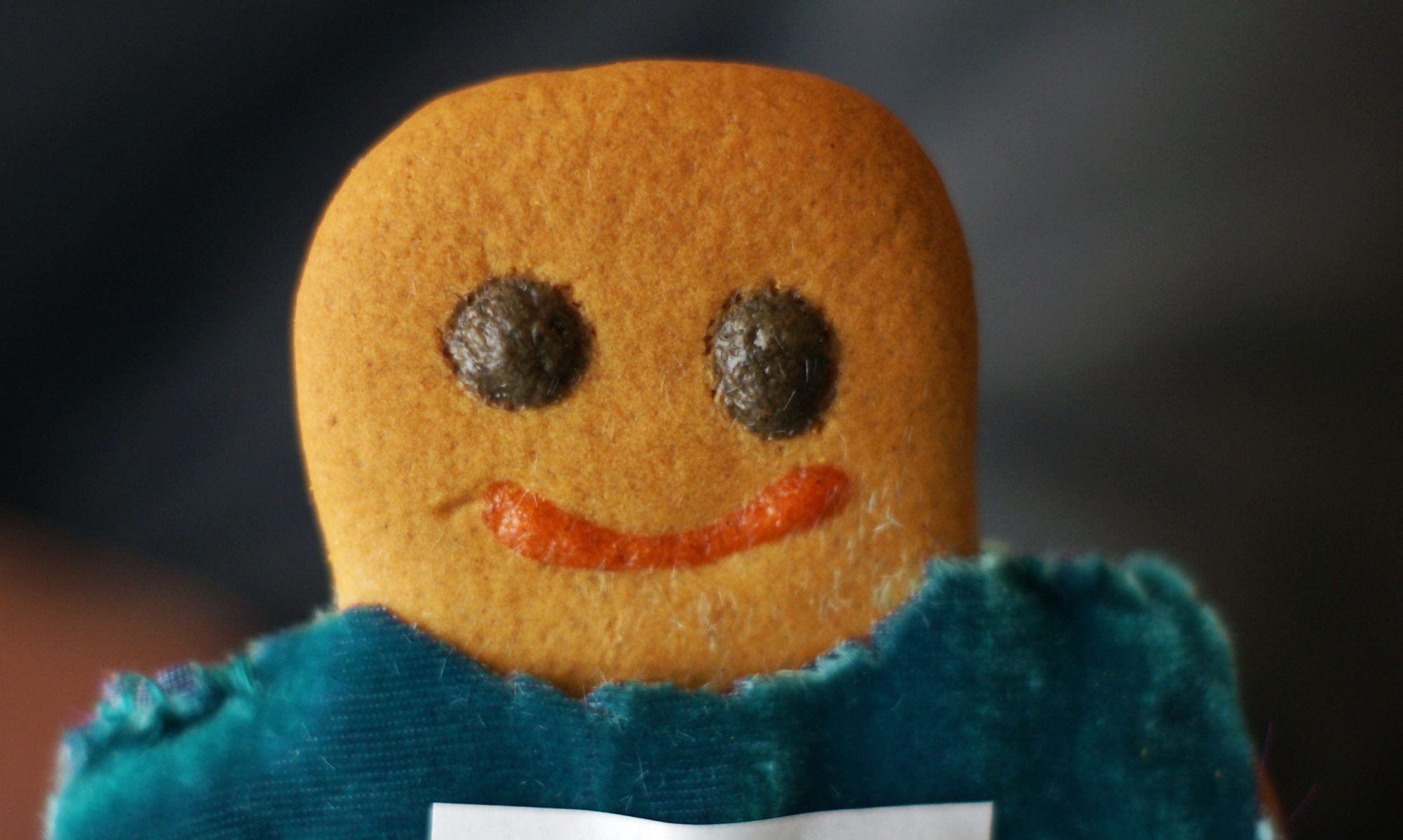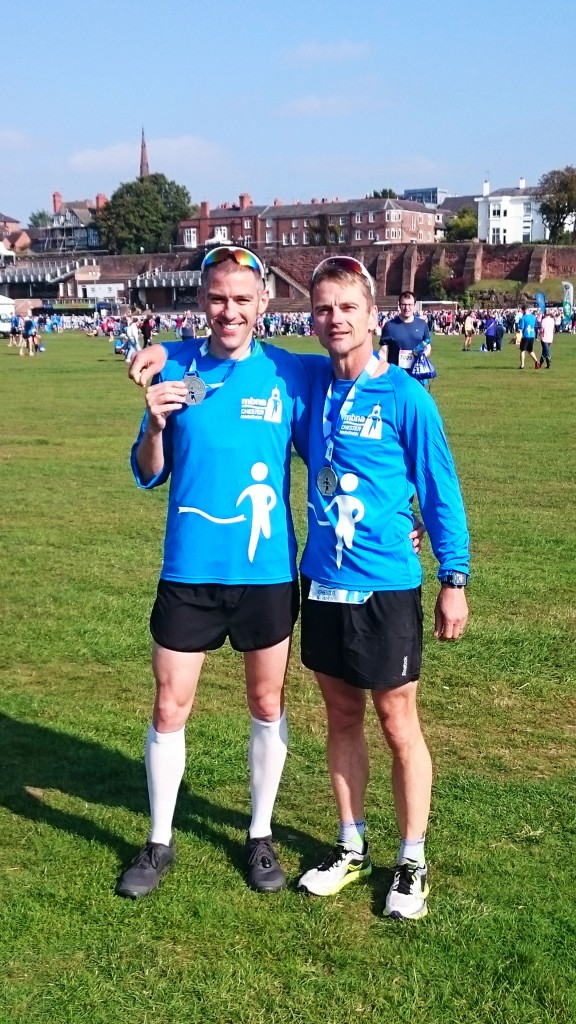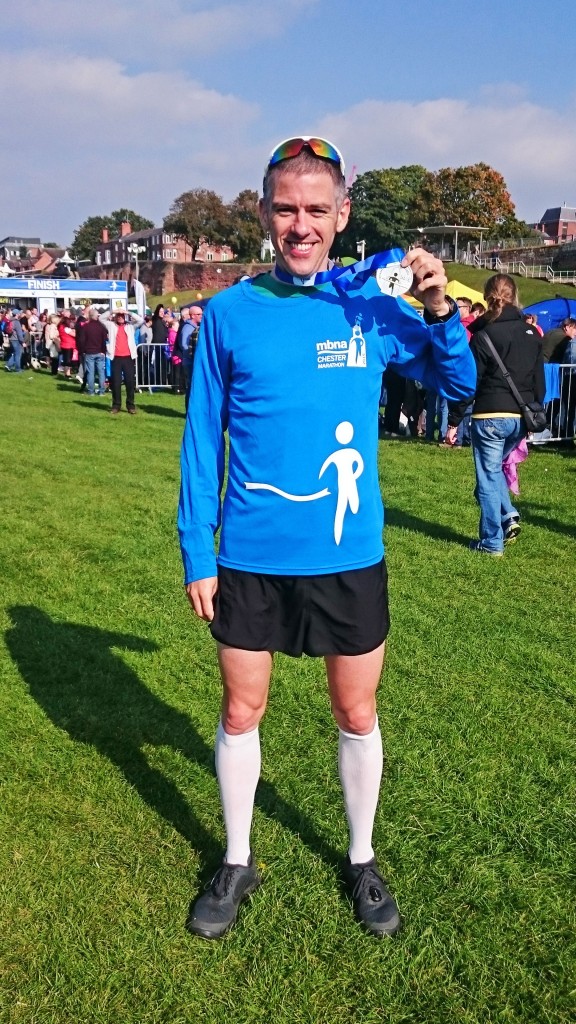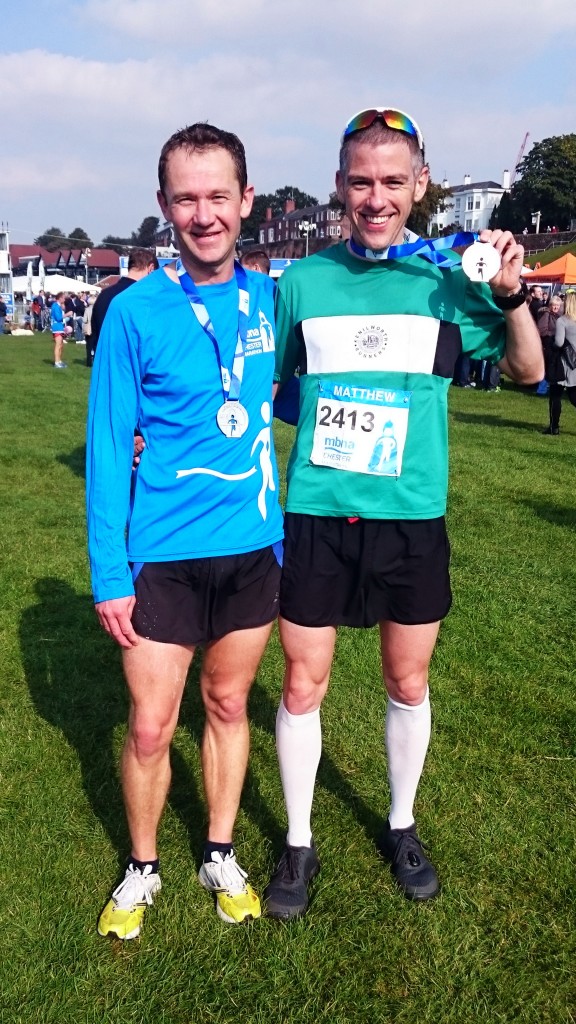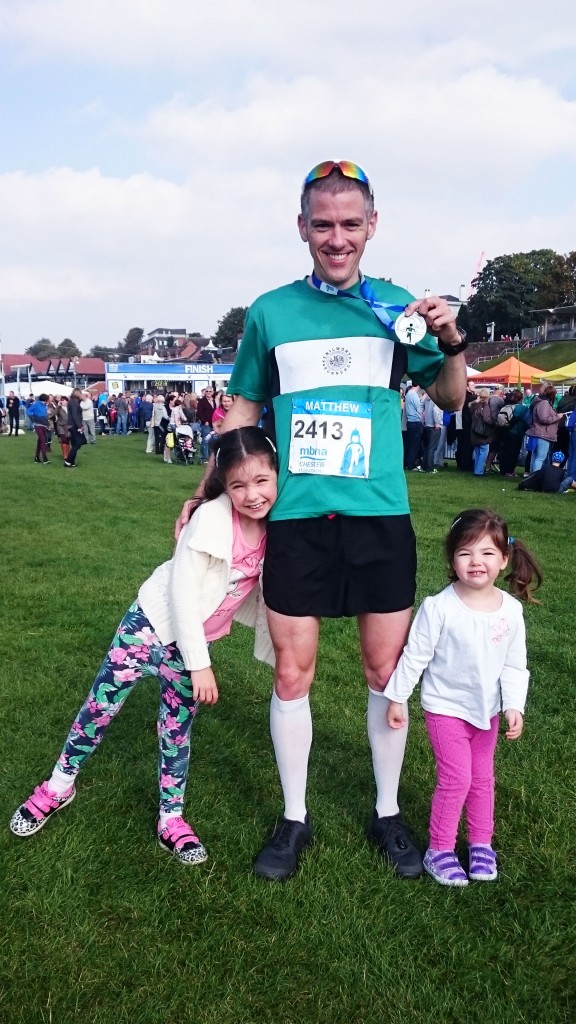My first, and until last Saturday, only Duathlon was in November 2007 when I took part in the Ballbuster at the legendary Box Hill. That was a unique experience – 8 mile run, 24 mile ride, 8 mile run up one of the most scenic but overrated hills in England. It was a tentative first foray into multi-sports, I’d taken part in my first ever sportive a week earlier suffering from a heavy cold and hadn’t really recovered a week later. While I quite enjoyed the experience cycling took a back seat a few months later when the first child was born and I concentrated on running.
Last June I took part in my first sprint triathlon and the Dambuster Duathlon at Rutland Water was to be my first real attempt at giving a Duathlon my full attention. I had entered last year’s Clumber Park Duathlon but was unable to take part due to injury. This year I was more or less fit to go, despite suffering from the calf tightness that has burdened me on and off for the past six months.
Not only was I concerned by the calf in the days before the Duathlon, the weather was looking decidedly iffy for race day, with predictions of ice and snow at worse, cold and windy at best. With snow falling in much of the country the day before, it was touch and go. Thankfully the snow didn’t reach the East Midlands and when I woke at 5am, it was raining, it was cold, but it was above freezing and looking ice free – so the race would be on.
It was going to be a family affair heading down to Rutland Water. Most of the packing had been done the night before so the early morning start wasn’t too traumatic and we arrived 90 minutes before the 8:15 start. My pre-race routine for running races is very well established now, but I am still a total novice at ‘athlons, so spent much of the 90 minutes pfaffing around. I had trouble getting my front wheel back on the bike thanks to it being so cold I could barely feel my fingers.
Once the bike was safely stored in transition and I decided I wasn’t going to risk trying to mount my bike with the shoes on the pedals, I fretted over what to wear right until the last minute. Eventually I opted to be as warm (and slipstreamed) as possible on the bike ride, even if that meant being a little overdressed for the run. This meant I wore the following: thin tights with triathlon shorts underneath; compression socks, a thermal vest, Witham Wheelers short sleeved cycling jersey, arm warmers, thin running gloves with thick winter gloves ready on the tri-bars for the bike leg. At the last minute I went with running sunglasses as the sun began to unexpectedly peer from behind the thick clouds. I also ditched the beany hat and the ear warmers and the second long sleeved thermal top.
I managed an underwhelming warm up of just under a mile, which offered encouragement in the fact the right calf just ached a touch rather than downright ached. I headed to the start area for the pre-race briefing. One final pit-stop and I found myself running frantically to the start line, the organisers opting to start the race a couple of minutes early.
With a starting horn we were underway and quite quickly onto a patch of grass that, for the moment was firm underfoot. The pace was frenetic, this being a World Age Qualifying race meant the quality was high. I made a solid but not over exuberant start, keeping in view the familiar site of fellow Belvoir Tri Club runner Adam Madge. With the first mile covered in 5:39 and with a heart rate of just under my half marathon figures, I felt fairly comfortable and truly in my comfort zone in the familiar surroundings of a road race.
We had a small patch on grass, which was slippy but not too bad before heading out for another mile or so before turning back for the return 5k. I passed Adam in the second mile as I ran a 5:35 and began picking off runners as I settled into a good rhythm aided a touch with a nice tailwind. The third mile was 5:38, when we turned and began to face a cold headwind. I had been overheating a touch with all the clothes I was wearing, now I felt comfortable.
Then it began to rain, a brief but fairly heavy shower. It didn’t really slow me too much with a 5:39 but during the fifth mile my right calf began to tighten and ache. Previous experience of the issue meant I knew I could carry on running through the discomfort, but it was enough to make me mentally want to ease up the effort. Add to that the short off-road section had now begun to get churned up and muddy plus the icy cold wind had become a head wind, the fifth mile slowed to 5:58. The final full mile was a rolling affair, still picking off runners I was motivated to put in a final surge, running 5:48 for the final mile and completing the 10k in a respectable 35:20.
I was 23rd overall and 6th in my age category at the end of the first run. Not bad, an indicator that the quality of field was high. My transition was a disaster. I struggled to fasten the helmet, I then opted to run barefoot to the exit of transition before putting my bike shoes on. This meant my feet were soaked before I started the bike ride. My official transition time of one minute is respectable. However I believe I spent the best part of another minute trying to put my bike shoes on, in a panic I’d not realised I hadn’t loosened the velcro fastenings, making them impossible to put on!
Once I’d mastered the art of putting on a pair of shoes, I set off on the bike leg. However it took another minute or so before I could begin cycling in anger. I put on my thick winter cycling gloves while riding okay, but then when trying to tighten my helmet using the wheel on top of the wheel, found it was impossible to do so with the gloves on. I couldn’t ride with the helmet so loose so I had to remove a glove, tighten the helmet and put the glove back on again, all done at fairly low speed.
Finally once onto the main road I was able to begin riding. The legs felt quite tired after the ride but I was able to get them going after a couple of minutes. The feet began to chill in the cold wind, the gaffer tape I’d put on as a potential fix on the ventilation holes failing badly. However, the gamble of wearing extra gloves paid off to some extent, as except in the final miles when the rain fell and we faced the full brunt of the arctic induced headwind, I was not dangerously cold, just cold enough to not be able to put a satisfyingly full effort in.
What was soon apparent on the bike ride, not that I needed any confirming, was that to cut it with the big boys at this level, an entry level road bike simply won’t suffice with the all singing carbon fiber TT bikes the vast majority of those who came flying past me were riding. I was thoroughly demoralised on the first downhill stretch at the start of the Rutland Ripple where I was going full gas trying to keep up speed when a guy on a fast TT bike flew past me freewheeling! I watched him all the way to the bottom of the hill when not a single pedal revolution occurred, yet he must have put 150-200 meters on me. I managed to catch most of it back on the subsequent ascent, before he swiftly disappeared when the road plunged back down again.
That became the pattern of the remainder of the ride. I could hold my own on any hills the ride had, but on the flat stuff and the descents I was horribly exposed and not best enjoying it. All the while my calf grumbled and I wondered how it would fare on the final run leg. I entered the final transition point having taken 1:19:02 on the bike leg. Far too long when the fastest bike leg was a staggering 59:52. I will never be that quick but I am hopeful that with some decent equipment under me and more practice at time trialing I could knock many minutes off this time. As it was I dropped overall from 24th to 65th and from 5th at the end of the opening transition to 12th by the time I re-entered it.
The second transition was almost as calamitous as the first. I got off the bike okay, opting not to take off the shoes and instead try to run in cleated bike shoes, which is not easy. Not paying attention I ran into some barriers with the bike, fortunately without damage, but with some seconds lost. I then couldn’t find my place in the bike racks, running down the wrong channel. It was only the screams from my wife and kids that pointed me in the right direction. At least I was able to remove the helmet without difficulty, my hands still warm. Apparently there were a number of competitors who required assistance as their hands were too numb to feel what they were doing.
Despite the woes, somehow apparently I climbed two places during transition. I set off on the final 5k leg just a few moments after the leading competitor had finished. I hadn’t time to dwell on the enormity of his achievements, instead I had to try and get my legs working again for the run leg. The first patch of grass was now churned and muddy, my shoes slipping helplessly. I then struggled as best I could for the first mile, the calf aching, the quads not best pleased. It felt slow, but the first mile was covered in 6:05. I then struggled loads on the longer grass section which was slippery in and muddy.
At the turnaround I spotted fellow Belvoir Tri Club member Adam just a few seconds behind me. Keen to be the first Belvoir home, I picked up the pace a touch once the grass section had been muddled through, ignoring the increasing ache in the right calf. The second mile was a 6:03 and the final mile was run at 5:48 pace, which was good enough to keep Adam at bay and to complete the final 5k leg in 17:25. My wife and children were there to greet me, which pleased me enormously but there was a real sense of disappointment at the finish. I was frustrated that the transitions were so bad, disappointed with my effort in the bike section, grateful that the bad calf made it to the finish but frustrated that it hindered my performance a touch.
During the race I had no idea where i had finished. I found out on Facebook that I was eighth in my age group (57th overall), which was better than I had thought I had managed. For a first real effort at Duathlon I should be happy, but there is knowledge that I could have done better that has tempered the joy. The weather too made it a mostly miserable affair plus too many novice mistakes put me out of the comfort zone I enjoy when taking part in running races. Hopefully at my next Duathlon I should have a TT bike in my possession which means I will be able to compete on a more level playing field.
